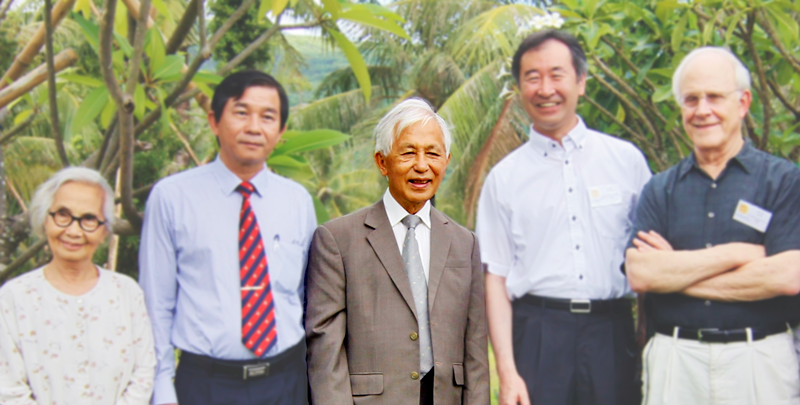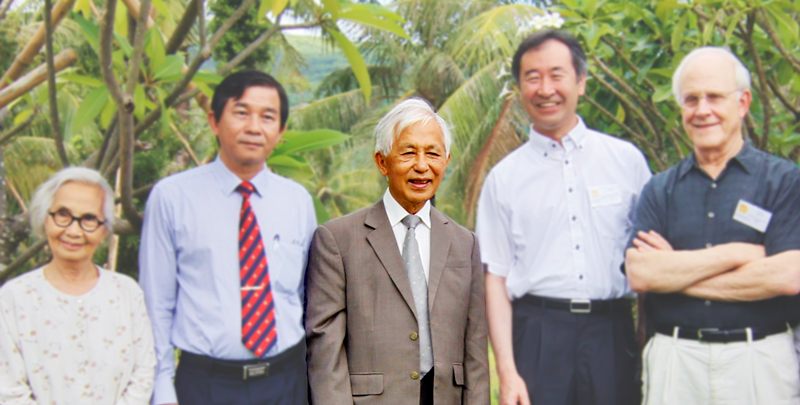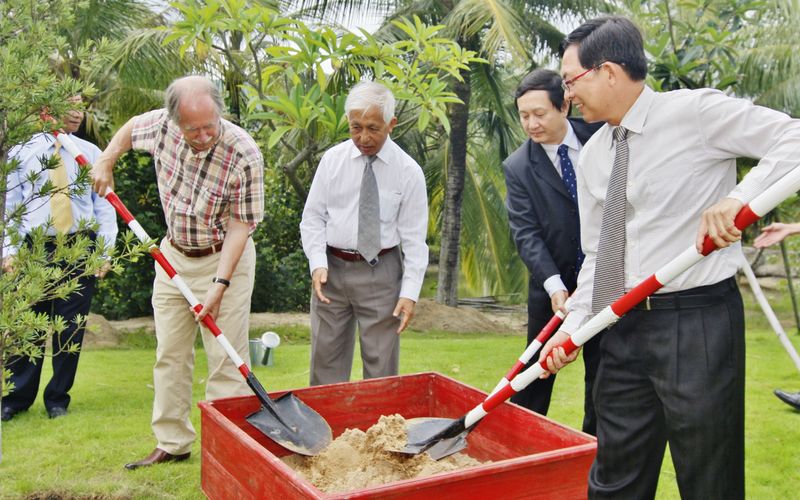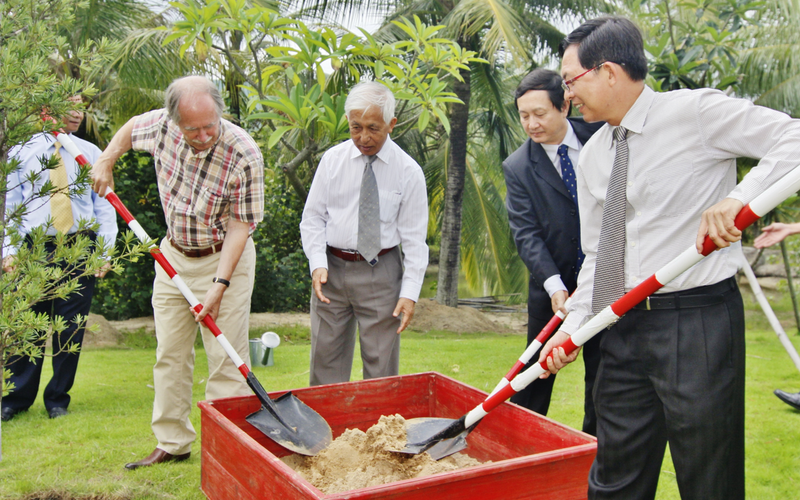Q&A: The Meetings Man
As a young physicist in France, Jean Trần Thanh Vân was frustrated by barriers that separated researchers by age or discipline. So, in January of 1966, as a fresh hire at the University of Orsay, he organized a meeting between particle physicists—young and old, experimentalists and theorists—at a French ski resort called Moriond. “Rencontres de Moriond” has since become one of the world’s premier particle physics meetings, and the “Rencontres” franchise has spread to other topics and other locations, including his home country of Vietnam. For his efforts in bringing scientists together and for his extensive charity work, the American Institute of Physics awarded him its 2011 Tate Medal for International Leadership in Physics.
Technically retired, Trần Thanh Vân stays busy managing the International Center for Interdisciplinary Science and Education (ICISE), which he helped establish in 2013 in the seaside city of Quy Nhon, Vietnam. With his wife Kim, a respected biologist, he hopes to make ICISE into a Vietnamese version of Princeton, with an institute for advanced theoretical research, multiple conferences per year, and (coming soon) a science museum and a planetarium. Physics caught up with Trần Thanh Vân at ICISE during the 15th Rencontres du Vietnam. On a terrace overlooking one of the center’s tree-lined ponds, he shared his secrets for organizing physics meetings and he talked about his hopes for a reinvigorated physics community in Vietnam.
–Michael Schirber
When did you decide to become a physicist?
I left Vietnam when I was 17 and went to France with the idea of becoming an engineer. But I became interested in particle physics in 1957 after the Nobel prize was awarded to Tsung-Dao Lee and Yang Chen-Ning. I met with Professor Maurice Lévy at the University of Paris and decided in 1958 to join his newly started laboratory in theoretical physics.
You were 30 years old when you organized the first Rencontres de Moriond. What gave you the idea?
One of the first scientific events I attended as a physicist was the Cargèse Summer School in Corsica, which Professor Lévy organized. This school is now a regular event, but the first one in 1958 was a bit peculiar. The professors all stayed in a hotel, and we students had to camp under the shade of olive trees. I enjoyed it, but nevertheless, I felt that the professors and the students should mix together.
Years later, some friends and I had this idea of having particle physicists meet at a ski resort. It was January, so we had the place pretty much to ourselves. The relaxed atmosphere allowed young scientists to interact directly with more senior ones. We were just 20 participants at that first Rencontres, so we never imagined that it would ever grow so big.
Most people would’ve been content with starting one internationally recognized conference series. You’ve organized many. What’s your secret for bringing scientists together?
I don’t have a secret. From the beginning, my conviction has been to promote young researchers and to have better communication between theorists and experimentalists. All our Rencontres are based on these two principles. But I couldn’t have succeeded without my wife Kim. We both place a high value on human connections and friendships, and so many friends have contributed to the Rencontres. Maybe our secret is that we have been looking in the same direction all our life.
The other meeting series that you’ve organized, did they have similar aims?
When I started the Rencontres de Moriond, I was young and didn’t know very many scientists. I had a lot more acquaintances—and experience—when I organized the Rencontres de Blois, starting in 1989. The goal of those meetings has been to bring a prestigious scientific event to Blois, an historically important city in central France.
Here in Vietnam, the aim has been similar: to create a project that really helps the development of science in Vietnam and makes the Vietnamese people proud. One way that we have done that is by inviting highly recognized scientists. We succeeded in getting Nobel Laureate, Jack Steinberger to attend the first Rencontres du Vietnam in 1993, which wasn’t easy, as there was still a U.S. embargo on Vietnam back then.
The names of several Nobel Prize winners are displayed in front of trees in the gardens that surround the main ICISE building. Can you explain why?
When a Nobel Prize winner visits, we invite them to plant a tree. And the next time they come, they water it. The trees make people feel closer to our project here in Vietnam. We currently have a dozen trees dedicated to Nobel laureates and several others dedicated to important Vietnamese officials who have visited ICISE.
We’ve shown that this place can attract well-known scientists, who come and discuss topics with each other and also enjoy the beaches and other sites in the area. But scientists have a duty to bring science to the larger public. In past years, we’ve organized meetings at ICISE between local high school students and Nobel Laureates, such as Jerome Friedman, David Gross, and George Smoot.
My dream is to have more of those interactions here at ICISE. The city of Quy Nhon is small, so it can’t compete with bigger Vietnamese cities for tourists or industrial development. But it can compete in science. We have recently constructed the Explorascience museum next to the conference center, and we are slowly filling it up with interactive exhibits. The site will also include a planetarium and an astronomical observatory. And in 2016, we opened an institute for theoretical physics and neutrino physics. In the future, I hope Quy Nhon will become a symbol of high-level research, like Princeton in the U.S.
What impact do you hope these projects will have on physics in Vietnam?
Vietnam had economic difficulties about 30 years ago, which put a strain on physics research and meant professors had no money to support grad students. As a result, we’re missing a generation of physicists. Without enough local professors, many good students have gone to foreign countries to study. Now it’s time for them to come back. We hope that what we’re doing in Quy Nhon will attract good researchers. We need their input to accelerate the progress in science for Vietnam. It is a long-term investment.
Michael Schirber is a Corresponding Editor for Physics based in Lyon, France.







